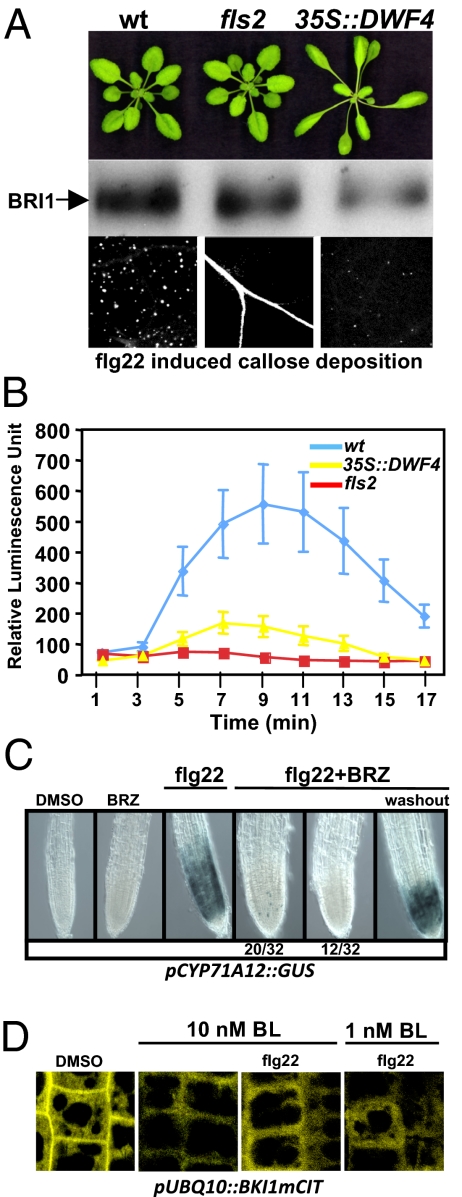Fig. 1.
BR biosynthesis modulates MAMP signaling. (A) Top: Images representative of Arabidopsis WT Col-0, fls2, and 35S::DWF4. Middle: Microsomal protein extracts prepared from genotypes listed at the top were subjected to anti-BRI1 immunoblot analysis. Bottom: Aniline blue-stained callose deposits in the leaves of the genotypes listed at the top treated with 1 μM flg22. (B) Oxidative burst triggered by 1 μM flg22 in WT Col-0 (blue), fls2 (red), and 35S::DWF4 (yellow) leaf discs measured in relative luminescence units. (C) GUS stains of CYP71A12::GUS line. Seedlings grown in the presence or absence of 5 μM BRZ were left untreated or treated with 1 μM flg22 for 12 h before GUS staining. Washout indicates removal of BRZ during flg22 treatment. Numbers at the bottom indicate the number of roots tested that fall into each category among the 32 roots assayed when BRZ was used in conjunction with flg22. In this assay, 20 roots of 32 displayed a highly attenuated response in the form of small blue spots. (D) Subcellular dynamics of BKI1 upon BL treatment is not affected by flg22 treatments. Subcellular localization of BKI1mCIT is shown in root meristem epidermal cells. BKI1mCIT is localized to the PM and cytosol in the absence of BL treatment (i.e., DMSO) and relocates rapidly from the PM to the cytosol following BL application. Note that BKI1 relocalization to the cytosol after BL treatment is not affected by flg22 treatment even when low concentrations of BL are used (10 nM and 1 nM). This experiment was repeated two times with similar results.

